Where we stand with the COVID-19 pandemic and case-based solutions
Trevor Bedford (@trvrb)
Associate Professor
Fred Hutch
27 May 2020
Congressman Heck Town Hall
Slides at: bedford.io/talks
Talk overview
- How we got here
- Where we are now
- How we get out here
How we got here:
Genomic overview of the COVID-19 pandemic, using viral sequencing to reconstruct
SARS-CoV-2 evolution and spread
Epidemic process

Sample some individuals

Sequence and determine phylogeny
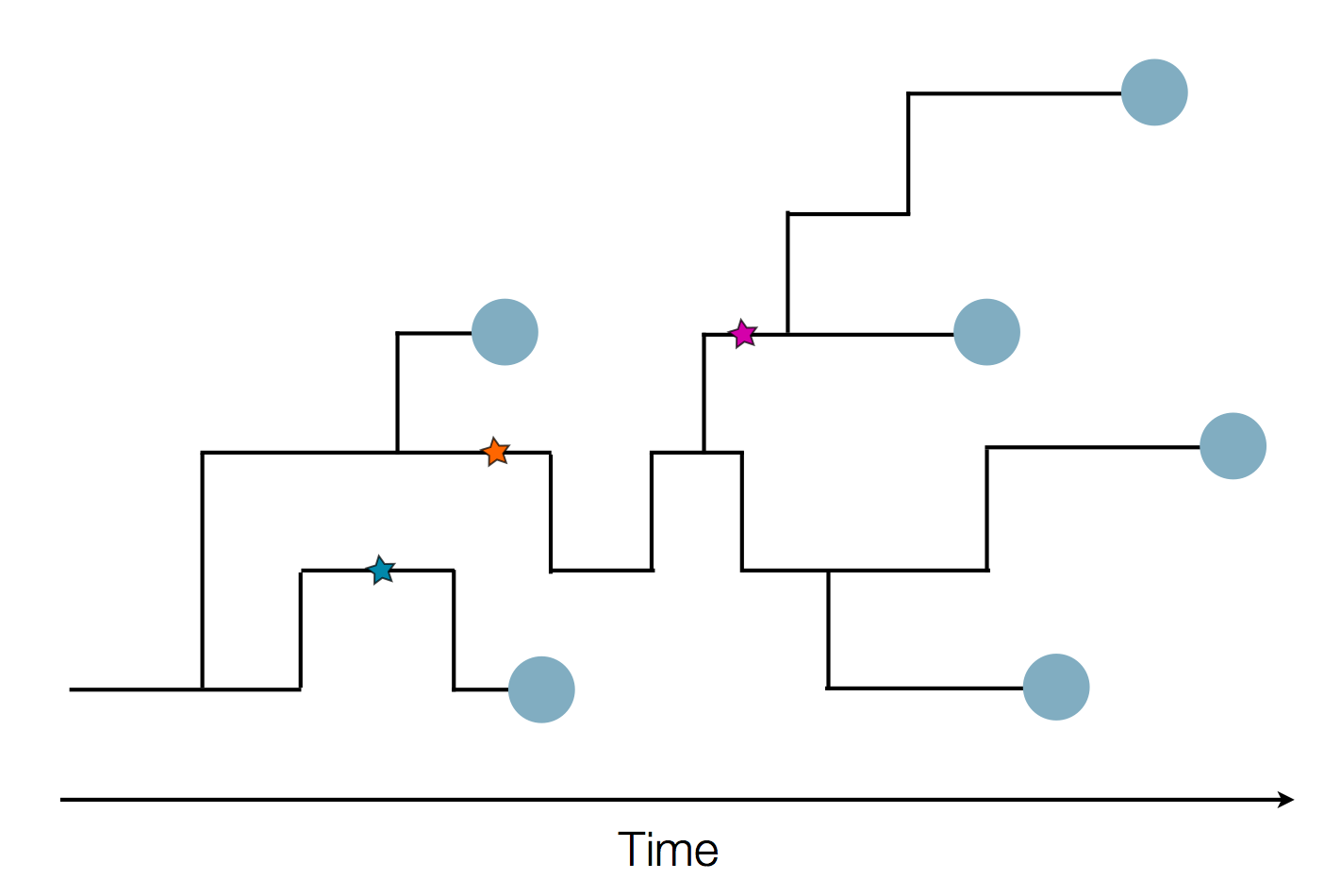
Sequence and determine phylogeny

Dec/Jan: Emergence of SARS-CoV-2 from Wuhan in ~Nov 2019
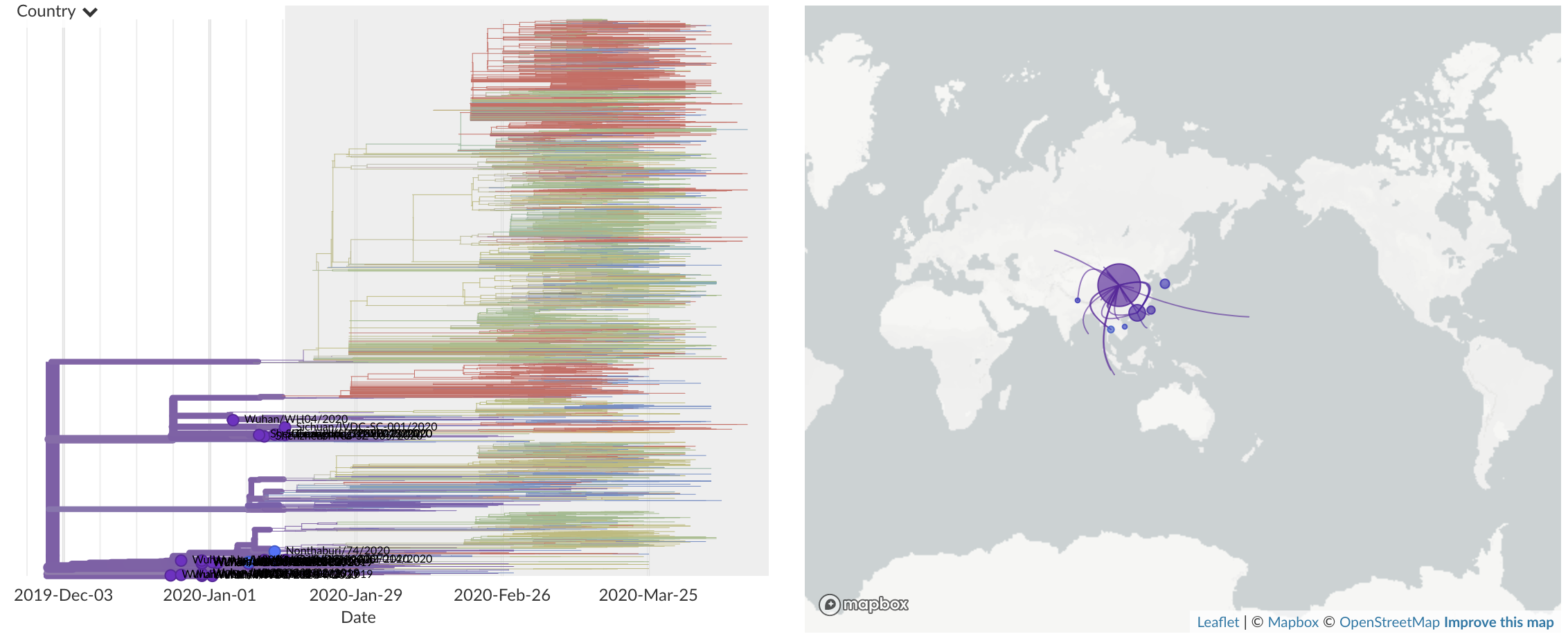
Jan/Feb: Spread within China and seeding elsewhere
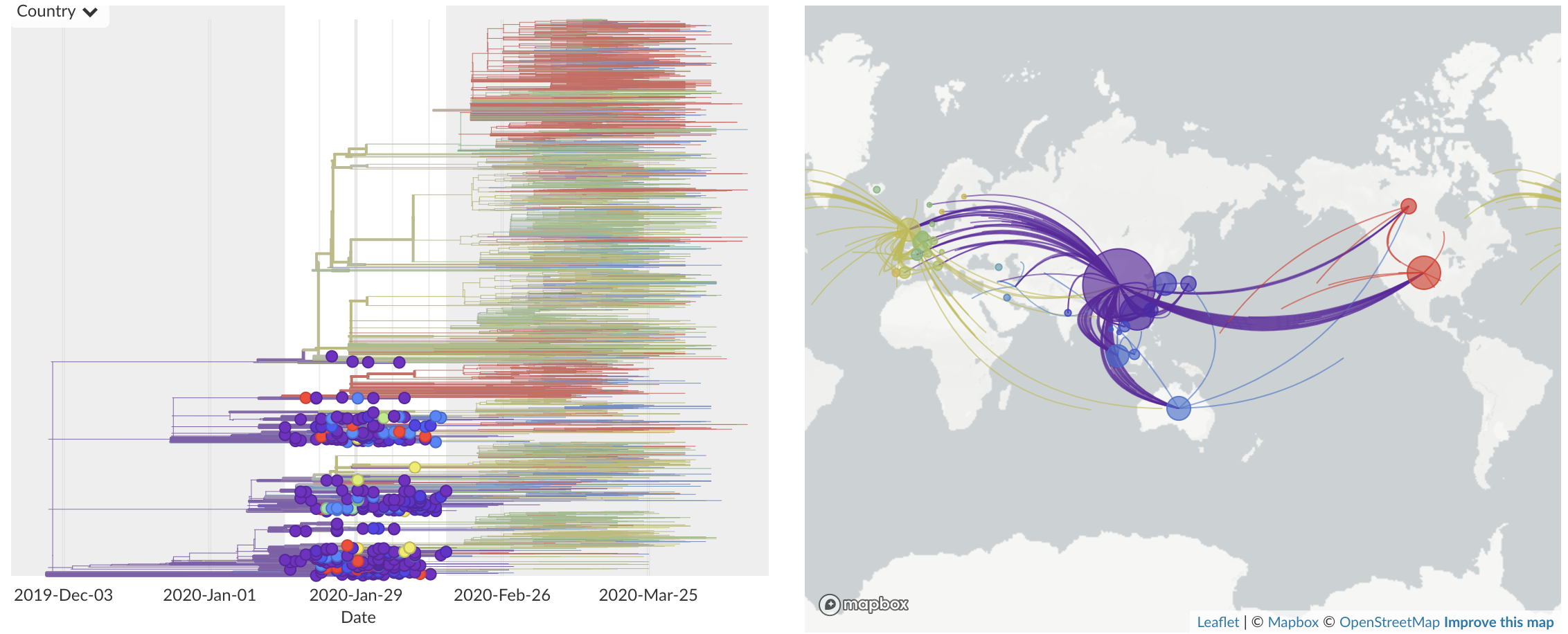
Feb/Mar: Epidemic spread within North America and Europe

Mar/Apr: Continued growth, but decreasing transmission with social distancing measures
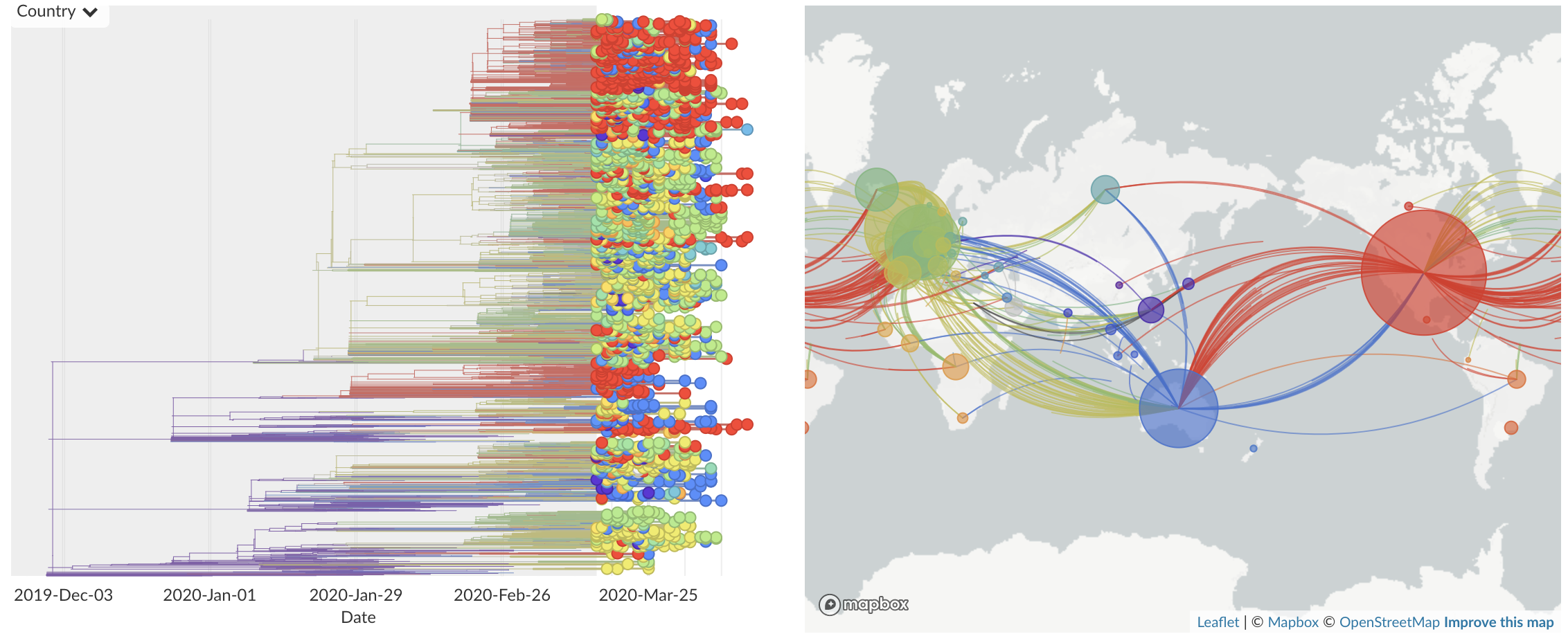
Epidemic in the USA was introduced from China in late Jan and from Europe during Feb
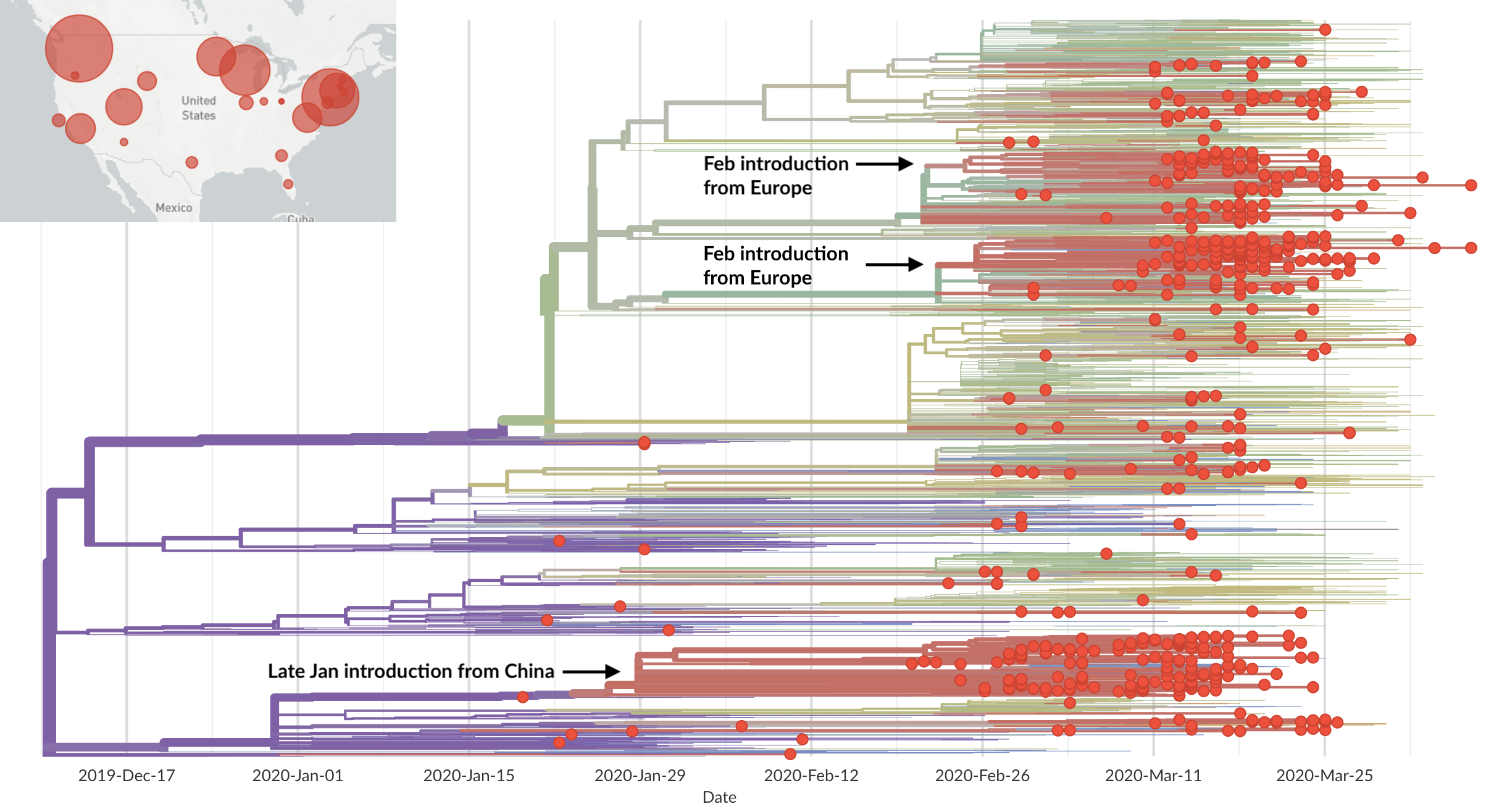
Once in the US, virus spread rapidly
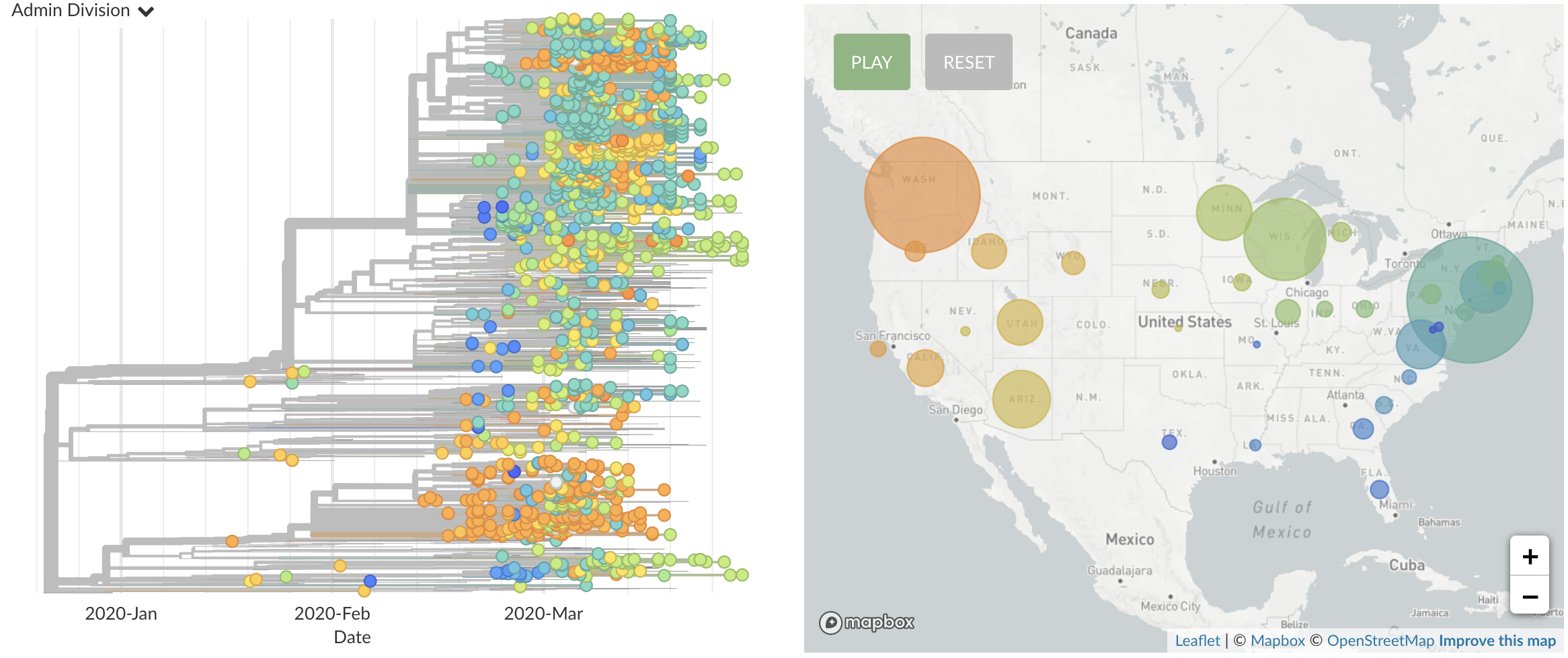
Where we are now:
Slow decline of detected cases, but continued transmission
With social distancing we've seen substantial drops in transmission, but not suppression

Transmission is heterogeneous across the US

My numbers
- Currently ~20,000 cases reported per day with 5-10X underreporting, this is likely ~100k infections per day and ~2M active infections
- NYC may have 20-30% seropositivity at this point, I'd guess ~5% nationally
- Herd immunity likely requires at least 60% recovered
- Infection-to-fatality ratio in general population of 0.5% to 1.0%
How we get out of here:
Case-based interventions to mitigate spread
Moving forward
- Suppression has failed
- Facing a long period of localized flare-ups and societal responses
- Recommend strategies to mitigate spread while keeping economy functioning
- Scalable case-based interventions (testing, contact tracing and isolation)
- Non-disruptive distancing and hygiene
Example transmission chain and intervention

Example transmission chain and intervention

Acknowledgements
Genomic epi: Data producers from all over the world, GISAID, Virological.org and the Nextstrain team





